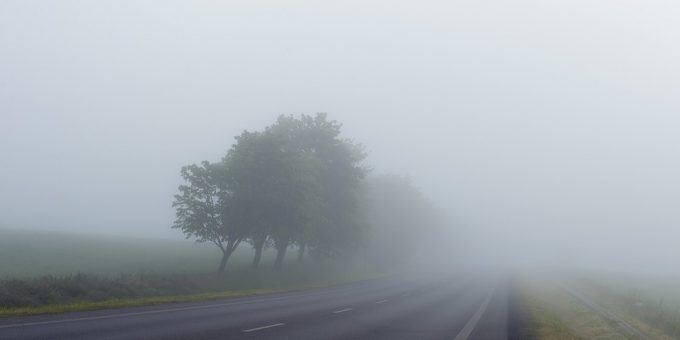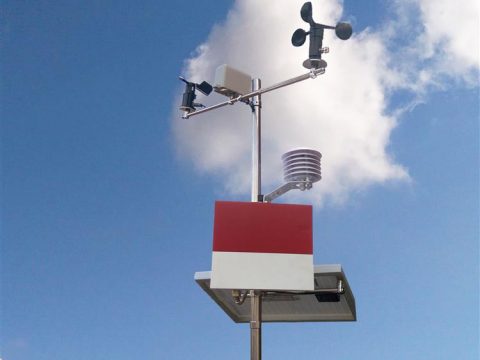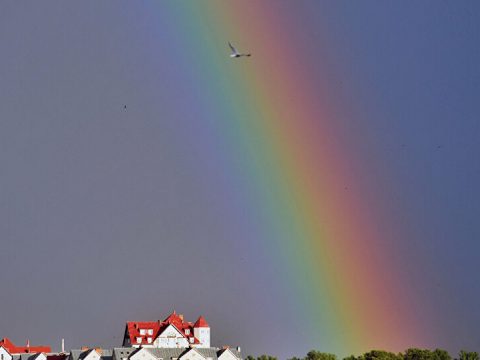
Fog is considered a low cloud, close to ground level or in contact with it. Naturally, it consists of water droplets that are like clouds in the air. However, unlike a cloud, water vapor in fog comes from sources close to the fog, such as a large body of water or a damp ground. For example, fog usually occurs over the city of San Francisco, California, in the summer, and the moisture of this fog is produced by the cold ocean waters nearby. In contrast, moisture in a cloud is collected from large distances that do not need to be near where the cloud formed. Fog Formation Like a cloud, fog occurs when water evaporates from a surface or is added to the air. This evaporation can be from the ocean or another body of water, depending on the type and location of the fog, or from damp ground such as swamps or farmland. When water evaporates from these sources and turns into water vapor, it rises into the air. As water vapor rises, it binds with aerosols called condensation cores (i.e. small dust particles in the air) to form water droplets. These droplets then condense to form fog when the process takes place close to the ground. However, there are several conditions that must first occur before the process of fog formation can be completed. Fog usually occurs when relative humidity is close to 100%, and the air temperature and dew point temperature are close to each other or less than 4°F (2.5°C). It is said that when the air reaches 100% relative humidity and dew point, it is saturated and therefore can no longer hold water vapor. As a result, water vapor condenses to form water droplets and fog. Types of Fog There are several types of fog that are categorized according to how they are formed. Two main types, radiation fog and routing fog. According to the National Weather Service, radiation fog occurs at night in areas with clear skies and calm winds. After gathering during the day, the night is caused by rapid heat loss from the Earth’s surface. As the Earth’s surface cools, a layer of moist air forms near the ground. Over time, relative humidity close to the ground will reach 100%, and fog will sometimes form very densely. Radiation fog is common in valleys and usually stays for a long time when the winds are calm when fog forms. This is a common pattern seen in the Central Valley in California. Another important type of fog is forward fog. This type of fog is caused by humid temperatures moving on a cold surface like the ocean. Forward fog is common in San Francisco and occurs in summer when warm air from the Central Valley moves out of the valley at night and through the cold air over The San Francisco Bay. When this process takes place, water vapor in warm air intensifies and creates fog. Other types of fog identified by the National Weather Service include rising fog, ice fog, freezing fog and evaporation fog. Upward sloping fog occurs when hot humid air is pushed towards a place where the air is colder, causing it to reach saturation and the water vapor to condense and create fog. Ice fog develops in Arctic or Arctic air masses, where the air temperature is below freezing and ice crystals hang in the air. Freezing fog occurs when the water droplets in the air mass are overcoated. These drops remain liquid in the mist and freeze immediately if they come into contact with a surface. Finally, when large amounts of water vapor are added to the air through evaporation, evaporation fog occurs and mixes with cold, dry air to create fog.



